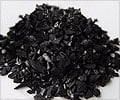Scientists have discovered how living organisms – including humans – avoid poisoning from carbon monoxide generated by natural cell processes.

But carbon monoxide – chemical symbol CO – is also produced within our bodies through the normal activity of cells. Scientists have long wondered how organisms manage to control this internal carbon monoxide production so that it does no harm.
University of Manchester researchers, working with colleagues at the University of Liverpool and Eastern Oregon University, have now identified the mechanism whereby cells protect themselves from the toxic effects of the gas at these lower concentrations.
Carbon monoxide molecules should be able to readily bind with protein molecules found in blood cells, known as haemproteins. When they do, for instance during high concentration exposure from inhaling, they impair normal cellular functions, such as oxygen transportation, cell signaling and energy conversion. It is this that causes the fatal effects of carbon monoxide poisoning.
The haemproteins provide an ideal 'fit' for the CO molecules, like a hand fitting a glove, so the natural production of the gas, even at low concentrations, should in theory bind to the haemproteins and poison the organism, except it doesn't.
"Toxic carbon monoxide is generated naturally by chemical metabolic reactions in cells but we have shown how organisms avoid poisoning by these low concentrations of 'natural' carbon monoxide," said Professor Nigel Scrutton, who is based in the Manchester Interdisciplinary Biocentre within the Faculty of Life Sciences.
Advertisement
"This mechanism of linking the CO binding process to a highly unfavourable energetic change in the haemprotein's structure provides an elegant means by which organisms avoid being poisoned by carbon monoxide derived from natural metabolic processes. Similar mechanisms of coupling the energetic structural change with gas release may have broad implications for the functioning of a wide variety of haemprotein systems. For example, haemproteins bind other gas molecules, including oxygen and nitric oxide. Binding of these gases to haemproteins is important in the natural functions of the cell."
Advertisement
The scientists say the work has potential for the use of haem-based sensors for gas sensing in a wide range of biotechnological applications. For example, such sensors could be used to monitor gas concentrations in industrial manufacturing processes or biomedical gas sensors, where accurate control of gas concentration is critical.
The study, headed by Professor Samar Hasnain, from the University of Liverpool's Institute of Integrative Biology, is published in Proceedings of the National Academy of Science.
Source-Eurekalert











